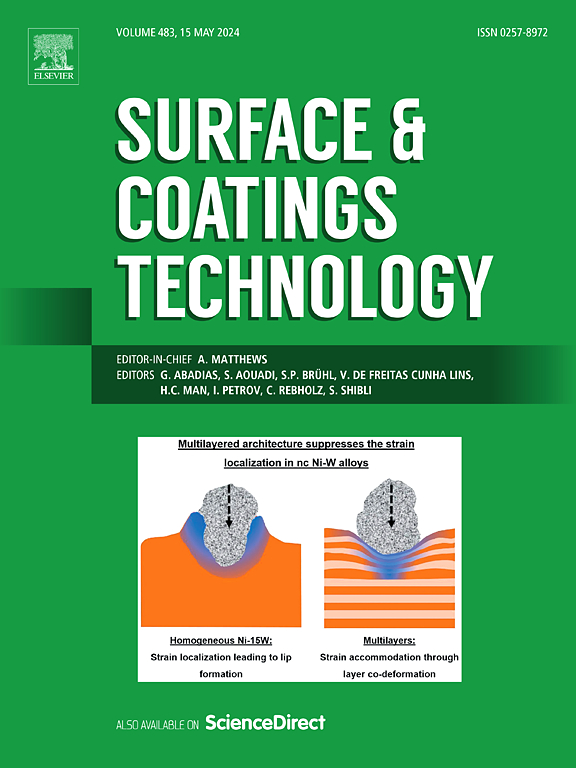High temperature cyclic CMAS corrosion of TBCs on second generation single crystal superalloy deposited using beam switching EBPVD technology
IF 5.3
2区 材料科学
Q1 MATERIALS SCIENCE, COATINGS & FILMS
引用次数: 0
Abstract
In this research, thermal barrier coatings were deposited on a single crystal superalloy CMSX-4 substrate with three different electron beam currents such as 2.3 A, 2.7 A and 3.0 A. A beam-switching technique with two evaporation sources is used in this research to develop the ceramic topcoat instead of a conventional EBPVD technology. The performance of the developed TBC coating is evaluated against a synthetic CMAS produced in the laboratory. Cyclic CMAS corrosion studies were carried out in a tubular furnace at 1050 °C. A detailed surface and cross-sectional analysis was done to evaluate the coating characteristics and performance before and after cyclic CMAS studies. The variations in the columnar morphology of TBC coating with the various electron beam currents and their effect of CMAS infiltration in the TBC topcoat are discussed in detail. A detailed analysis based on the weight gain by thermogravimetric charts, thermally grown oxide thickness and penetration of CMAS by field emission scanning electron microscope is made. The corrosion products formed and the phases presented were analysed using the X-ray diffraction technique.
求助全文
约1分钟内获得全文
求助全文
来源期刊

Surface & Coatings Technology
工程技术-材料科学:膜
CiteScore
10.00
自引率
11.10%
发文量
921
审稿时长
19 days
期刊介绍:
Surface and Coatings Technology is an international archival journal publishing scientific papers on significant developments in surface and interface engineering to modify and improve the surface properties of materials for protection in demanding contact conditions or aggressive environments, or for enhanced functional performance. Contributions range from original scientific articles concerned with fundamental and applied aspects of research or direct applications of metallic, inorganic, organic and composite coatings, to invited reviews of current technology in specific areas. Papers submitted to this journal are expected to be in line with the following aspects in processes, and properties/performance:
A. Processes: Physical and chemical vapour deposition techniques, thermal and plasma spraying, surface modification by directed energy techniques such as ion, electron and laser beams, thermo-chemical treatment, wet chemical and electrochemical processes such as plating, sol-gel coating, anodization, plasma electrolytic oxidation, etc., but excluding painting.
B. Properties/performance: friction performance, wear resistance (e.g., abrasion, erosion, fretting, etc), corrosion and oxidation resistance, thermal protection, diffusion resistance, hydrophilicity/hydrophobicity, and properties relevant to smart materials behaviour and enhanced multifunctional performance for environmental, energy and medical applications, but excluding device aspects.
 求助内容:
求助内容: 应助结果提醒方式:
应助结果提醒方式:


